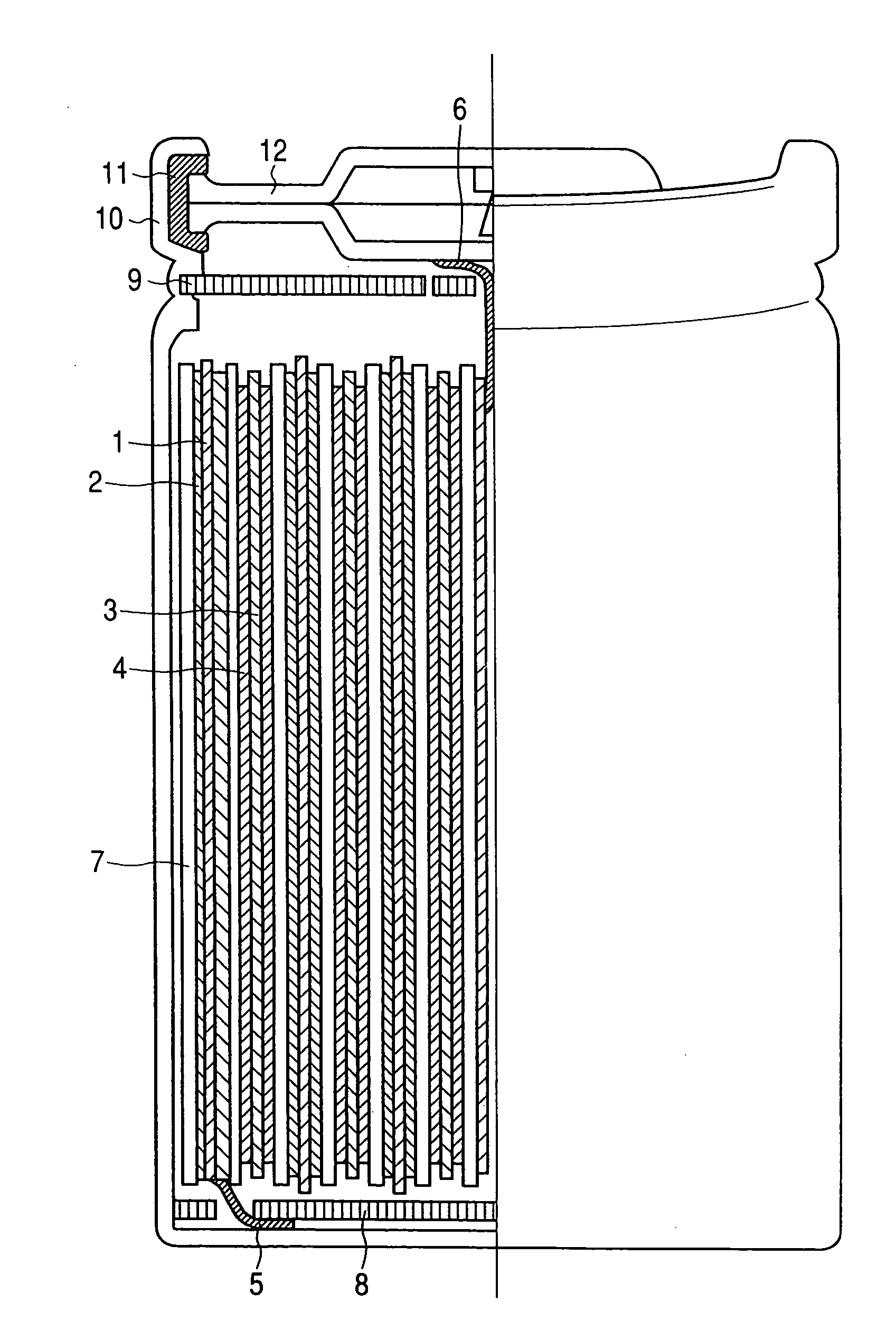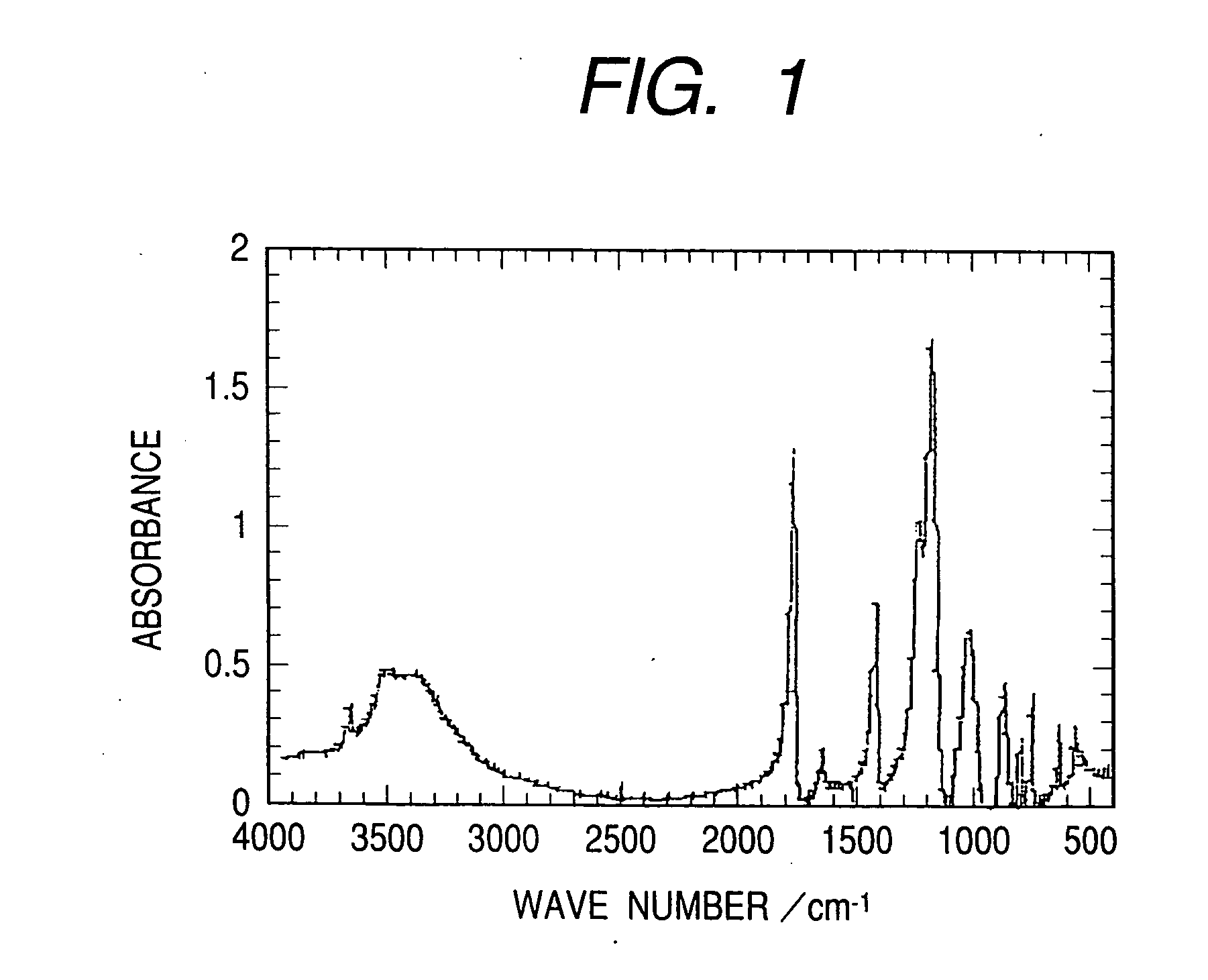Organic borate compounds and the nonaqueous electrolytes and lithium secondary batteries using the compounds
a technology of organic borate compounds and nonaqueous electrolytes, which is applied in the direction of battery/fuel cell control arrangement, non-aqueous electrolyte cells, cell components, etc., can solve the problems of low electroconductivity, low flammability of organic solvents suitable for nonaqueous electrolytes, and low flammability of organic solvents, so as to improve the electroconductivity of this solution, improve the high-temperature storage characteristics of lithium secondary batteries, and the solub
- Summary
- Abstract
- Description
- Claims
- Application Information
AI Technical Summary
Benefits of technology
Problems solved by technology
Method used
Image
Examples
embodiment 1
[0038] The Synthesis and Identification of Lithium Tetrakis (Trifluoroacetate) Borate (Hereinafter Referred to as LB1)
[0039] After 4.9 g of boric acid, 9.5 g of lithium trifluoroacetate, and 100 ml of dimethyl carbonate were put into a 300-ml three-neck flask, 50 g of trifluoroacetate anhydride has been added dripwise while the entire mixture was being stirred under an ice-cooled status. After the dripping operation, the mixture has been stirred for about seven more hours at 80 degrees C. Next, the solvent has been removed from the reaction agent and the thus-obtained solid has been recrystallized using tetrahydrofuran. The thus-obtained crystal has been vacuum-dried to obtain LB1 at a yield of 67%. An infrared absorption spectral diagram of the compound which has thus been obtained is shown as FIG. 1.
[0040] Infrared absorption: 1,770 cm−1 (C═O), 1,230 cm−1 (C—F), 1,180 cm−1 (C—F), 1,040 cm−1 (C—O).
[0041]11B-NMR spectrum (on a CD3OD / trimethyl borate basis): δ-18.3 ppm. Ultimate a...
embodiment 2
[0042] The synthesis and identification of lithium tetrakis (pentafluoropropanoate) borate (hereinafter referred to as LB2).
[0043] After 8.8 g of boric acid, 24.2 g of lithium pentafluoropropionate, and 265 ml of dimethyl carbonate were put into a 1000-ml three-neck flask, 132.2 g of pentafluoropropionate anhydride has been added dripwise while the entire mixture was being stirred under an ice-cooled status. After the dripping operation, the mixture has been stirred for about 17 more hours at 90 degrees C. Next, the solvent has been removed from the reaction agent and the thus-obtained solid has been recrystallized using tetrahydrofuran. The thus-obtained crystal has been vacuum-dried to obtain LB2 at a yield of 38%. An infrared absorption spectral diagram of the compound which has thus been obtained is shown as FIG. 2.
[0044] Infrared absorption: 1,770 cm−1 (C═O), 1,230 cm−1 (C—F), 1,180 cm−1 (C—F), 1,040 cm−1 (C—O).
[0045] 11B-NMR spectrum (on a CD3OD / trimethyl borate basis): δ-1...
embodiment 3
[0046] The Synthesis and Identification of Lithium Tetrakis (Trichloroacetate) Borate (Hereinafter Referred to as LB3)
[0047] After 6.7 g of boric acid, 18.3 g of lithium trichloroacetate, and 130 ml of dimethyl carbonate were put into a 300-ml three-neck flask, 100 g of trichloroacetate anhydride has been added dripwise while the entire mixture was being stirred under an ice-cooled status. After the dripping operation, the mixture has been stirred for about 10 more hours at 110 degrees C. Next, the solvent has been removed from the reaction agent and the thus-obtained solid has been heated under vacuum pressure to remove, by sublimating, the trichloroacetate included in the solid. After this, the sublimate has been recrystallized using tetrahydrofuran. The thus-obtained crystal has been vacuum-dried to obtain LB3 at a yield of 24%. An infrared absorption spectral diagram of the compound which has thus been obtained is shown as FIG. 3.
[0048] Infrared absorption: 1,770 cm−1 (C═O), 1...
PUM
| Property | Measurement | Unit |
|---|---|---|
| driving voltage | aaaaa | aaaaa |
| carbon number | aaaaa | aaaaa |
| operating electric potential | aaaaa | aaaaa |
Abstract
Description
Claims
Application Information
 Login to View More
Login to View More - R&D
- Intellectual Property
- Life Sciences
- Materials
- Tech Scout
- Unparalleled Data Quality
- Higher Quality Content
- 60% Fewer Hallucinations
Browse by: Latest US Patents, China's latest patents, Technical Efficacy Thesaurus, Application Domain, Technology Topic, Popular Technical Reports.
© 2025 PatSnap. All rights reserved.Legal|Privacy policy|Modern Slavery Act Transparency Statement|Sitemap|About US| Contact US: help@patsnap.com



